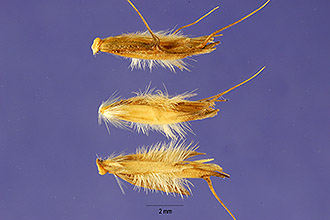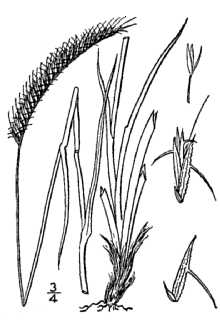Toothache Grass
Scientific Name: Ctenium aromaticum (Walter) Alph. Wood

| General Information | |
|---|---|
| Usda Symbol | CTAR |
| Group | Monocot |
| Life Cycle | Perennial |
| Growth Habits | Graminoid |
| Native Locations | CTAR |
Plant Guide
Use soil moisture sensors to measure the soil moisture of Toothache Grass.
Fact Sheet
Alternate Names
toothachegrass , Use soil moisture sensors to measure the soil moisture of Toothache Grass.
Uses
Livestock grazes toothache grass most readily during spring and summer.
Status
Please consult the PLANTS Web site and your State Department of Natural Resources for this plant’s current status, such as, state noxious status and wetland indicator values.
Description
Grass Family (Poaceae). Toothache grass is a warm-season, perennial bunch grass. The height is between 2 and 3 feet. The leaf blade is 1/4 to 1/2 inch wide, 6 to 10 inches long, pale green on bottom, and darker green on top. The leaf sheath is mostly basal and shorter than internodes. The ligule is small membrane with short hair. The stem, when erect, has an enlarged base and contains a substance that deadens the tongue and gums when chewed. The seedhead is a curved spike with spikelets sessile on one side of rachis, giving it a comb-like appearance. Distribution: For current distribution, please consult the Plant Profile page for this species on the PLANTS Web site.
Management
This grass responds to same management as major associated grasses. An abundance of this grass indicates good range condition on wet sites.
Establishment
Growth starts in early spring and again in October or November. The seed ripens in late May or early June. Occasionally, it grows in pure stands. Each plant produces many seed stalks. This grass produces an abundant seed crop the first growing season after a burn. It is adapted to wet, poorly drained, acid soils. Typical sites are flatwoods with clayey subsoil and sloughs, which have standing or slow-moving water following heavy rains. Cultivars, Improved and Selected Materials (and area of origin) Please contact your local NRCS Field Office.




